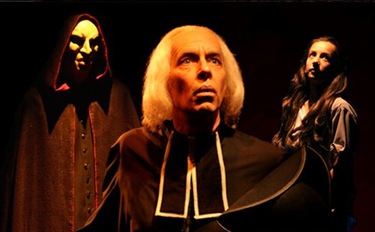Greetings,
This week, as many of you may know, I attended the fall general meeting of the United States Conference of Catholic Bishops in Baltimore. Among the highlights of the meeting were approval of a pastoral letter on marriage, a study on the status of the religious life in the United States, and a report analyzing the clergy abuse crisis.
Before I left, however, I had the pleasure of visiting the South Area Solomon Schechter Day School in Norwood to accept an award on behalf of the late Pope John Paul II.
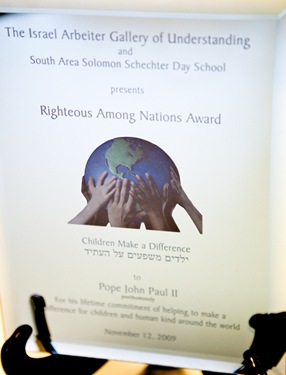
The Righteous Among the Nations Award was presented by the SASSDS and the Israel Arbeiter Gallery of Understanding. It recognized the late pope for his work in promoting relations between the Christian and Jewish communities.
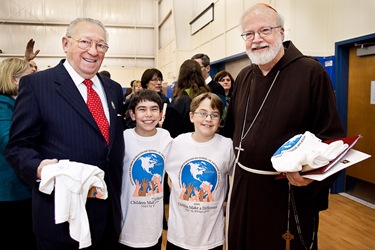
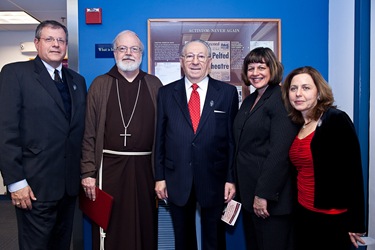
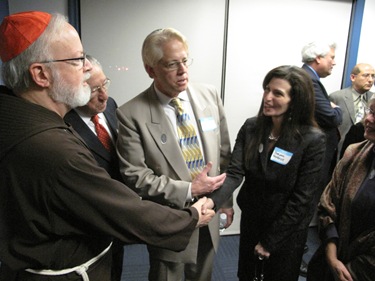
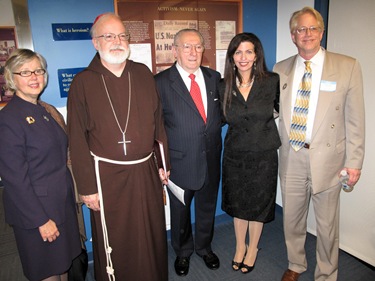
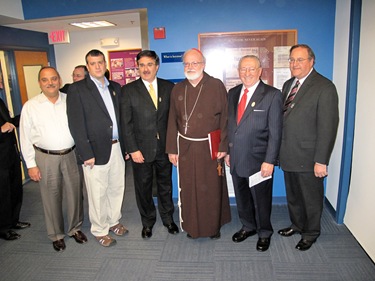
The evening began with a reception where I was happy to see many members of the local Jewish community. Israel Arbeiter, president of the American Association of Jewish Holocaust Survivors of Greater Boston, showed me the gallery named in his honor, which depicts his personal journey of survival and the stories of the persecution of Jewish people that took place in Europe during the Holocaust.
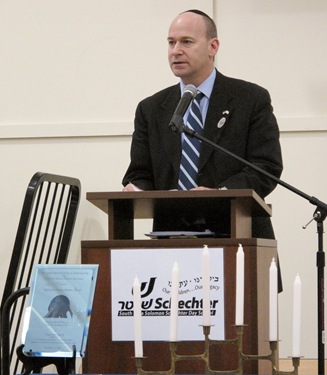
Nadav Tamir, the Consul General of Israel to New England, spoke during the program.
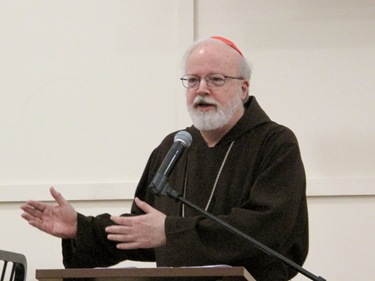
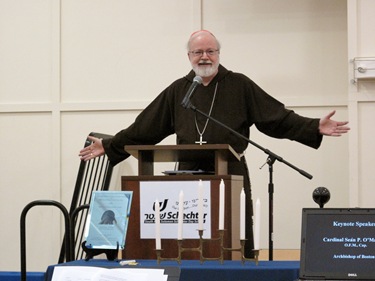
I gave the keynote address talking about the Holocaust and the Holy Father, as well as the Kristallnacht, since its anniversary was the same week as the celebration.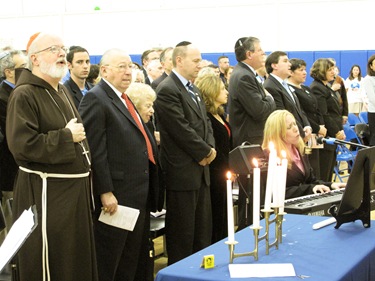
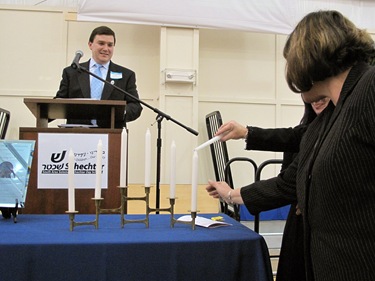
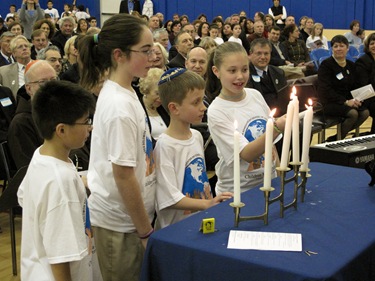
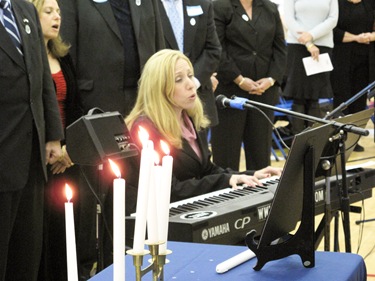
One of the many significant moments of the evening was the musical program presented by the children of St. Catherine of Siena School in Norwood and Solomon Schechter. It was very nice.
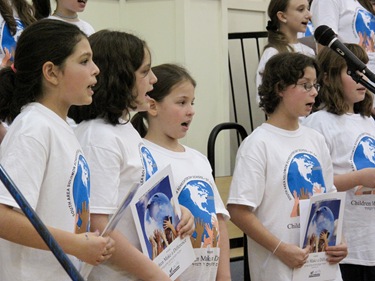
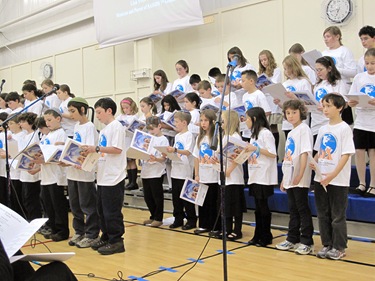
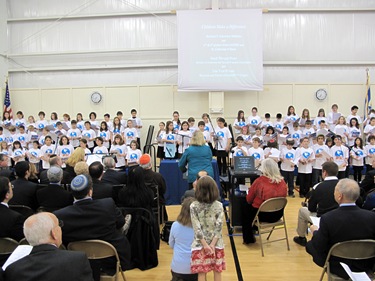

It was a very beautiful ceremony and I was happy to see many members of both the Catholic and Jewish communities in attendance.
– – –
On Saturday, I attended a Mass at the Shrine of the Sacred Heart in Washington, D.C. marking my 25th anniversary as a bishop with the Spanish and Haitian communities there.
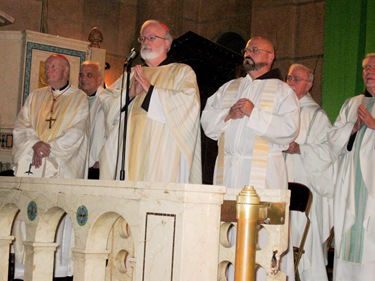
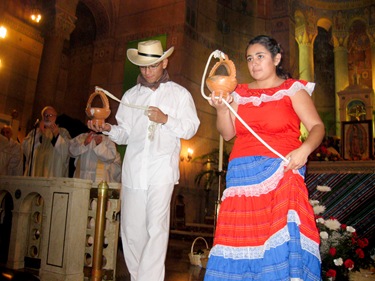
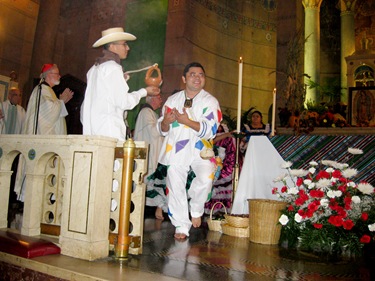
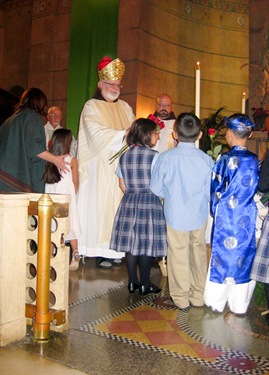
Back in the 1970’s and 1980’s, I had the Masses in that parish for the Hispanics and the Haitians. They are still a very large portion of the parish along with a very vibrant Vietnamese community.
Just before I left Washington, Cardinal Hickey had assigned Sacred Heart to the Capuchin Friars. So they asked if I would celebrate this Mass to mark not only my 25th anniversary as a bishop, but also the 25th year that the Capuchins have been in that parish.
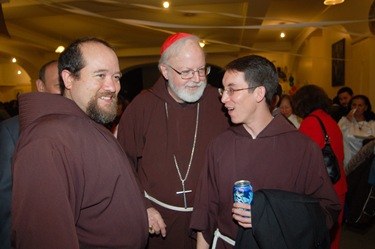
It’s a very interesting parish, with several Masses in Spanish, a Haitian Creole Mass, and a Vietnamese Mass, besides the English Mass. There’s a very vibrant community there, and a wonderful school.
The headquarters of the Centro Catolico, where I had worked for many years in Washington, are now in what was the convent of the school. At that time, though, our headquarters were down the street.
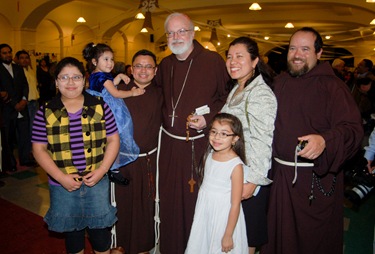
I was honored that Cardinal McCarrick was able to join us along with many old friends from my time in Washington including many whom I had married, baptized, given First Communion and worked with in different social programs as well as members of the Agrupacion Catolica (many of whom volunteered at the Centro Catolico) and friars from Capuchin College.
Afterwards, they had food in the parish hall with Mariachis.
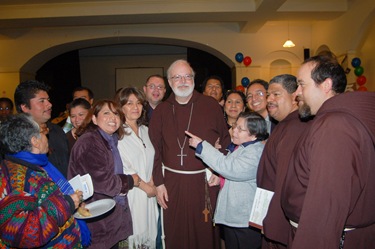
Some of the friars came from Puerto Rico, some of whom I had ordained priests. They presented me with a lovely plaque of Our Lady of Providence, the patroness of Puerto Rico.
It was a lovely celebration.
– – –
From Monday through Wednesday I attended the U.S. Bishops’ meeting in Baltimore.
At the meeting we approved the pastoral letter Marriage: Love and Life in the Divine Plan.
It was part of the Marriage Initiative that the USCCB has been working on for several years now.
Indeed, one of the five priorities that was set for the bishops’ conference was marriage and the family. I think this letter will be an important foundational document that will be quite helpful to us going forward.
Marriage is the centerpiece of God’s plan for humanity, so it is crucial for human society as well as for the Church. As we know, marriage is constantly under attack. The divorce mentality, cohabitation, and now the redefinition of marriage have been three very strong blows against the institution of marriage. In light of that reality, this pastoral letter is particularly important. I am pleased it was approved and we will work very hard to promote it in the Archdiocese of Boston.
– – –
As the chairman of the Clergy, Consecrated Life, and Vocations Committee I introduced Brother Paul Bednarczyk, CSC, the executive director of the National Religious Vocation Conference. Along with the Center for Applied Research in the Apostolate (CARA), they recently sponsored a study on religious life.
The study stressed the fact that, although most religious institutions in the United States are experiencing diminishing numbers, there are still young people who are coming to religious life. Seventy-eight percent of the men’s communities and 66 percent of the women’s communities have at least one candidate in initial formation.
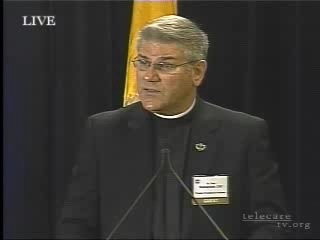
Brother Paul
They gave some further information about the characteristics of these new members:
– The average age for entrance is 30.
– 21 percent of those in initial formation are Hispanic, 14 percent are Asian, and 6 percent are African-American. (This is quite a change from the past.)
– 9 in 10 were raised as Catholic (Meaning, of course, that 10 percent of them were received into the Church as adults.)
– Almost 75 percent of them attended a Catholic school. (This, I think, underlies the importance of Catholic education for the formation of leaders in our Church.)
– More than two-thirds of them had considered religious life by the time they were 21.
The most successful institutes, in terms of attracting and retaining new members are those that follow a more traditional style of religious life where the members live together in community, participate in daily Eucharist, pray the divine office, and engage in devotional practices together. Communities whose members wear a religious habit, work together in a common apostolate, and are explicit about their fidelity to the Church and the teachings of the Magisterium are the most successful communities — both men’s and women’s — in recruiting young candidates.
The best practices that Brother Paul and the study tried to promote were to instill a culture of vocations and to involve the membership and leadership in a concerted vocations promotion effort. They also underscored the importance of having a full-time vocation director, and talked about the importance of using the media, especially the internet. They also talked about the importance of discernment programs and opportunities for potential candidates to meet members of the religious community.
It was a very positive and hope-filled report on religious life at a time when the religious communities in the United States are being visited. I think it’s a hopeful sign that the Church is very concerned about promoting religious life. I was very happy to make that presentation to the Bishops Conference.
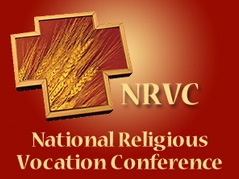
You can read much more about the study, including the text of Brother Paul’s address and a link to a video of the presentation, at the NRVC web site.
– – –
The conference also received additional reports from the John Jay College of Criminal Justice regarding the causes and context of the sexual abuse crisis.
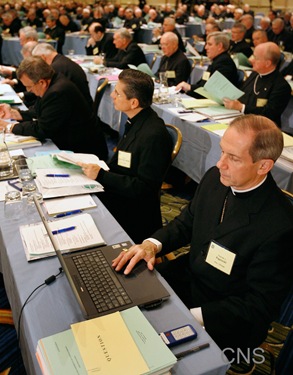
The Bishops Conference engaged this very prestigious institution to perform studies to help us understand how the sexual abuse crisis arose in the Church. Previously, they have presented interim reports on the dimensions of the problems, and now they are the studying causes and context.
I think it was an interesting report that was, in some ways, encouraging. The study indicates that the period of the 1970’s and early 1980’s was a period of a great deal of social turmoil in the country during which there was a particularly high incidence of sexual abuse of children. However, the study also indicates how there was a very sharp drop in sexual abuse in Church institutions.
Some people have said that since the reporting comes so much later it is hard to tell whether the abuse is still going on. But all of the reporting that has come in always returns to the same years. The sociologists are telling us that that is an indication that, indeed, the curve of high incidents in the ‘70’s and early ‘80’s is behind us.
The measures that have been taken by the Church have done much to eliminate the problems in Church institutions. At a time when sexual abuse in other institutions has been on the rise, the Church has brought it under control by intensive screening, massive education, and very careful reporting. I think that’s a very important fact.
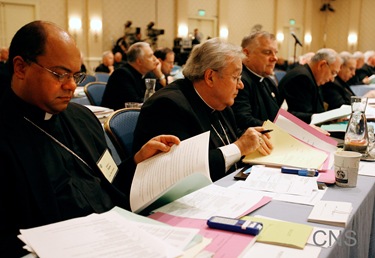
This study has been given funds by the Bishops Conference, but also by the Justice Department and other institutions trying to better understand the whole phenomenon of sexual abuse, not just in the Church but in society.
The report certainly indicated that, during its height when these problems had arisen, there was very little awareness in the Church, and also in society in general, as to the profound damage that was done to the victims. The Church, as well as others in society, did neglect to focus on that.
I was comforted by the fact that, in the last several years, and particularly after the Dallas document was approved in 2002, there has been marked improvement in the way the Church has dealt with this. I think the Church has made a very positive contribution to other institutions that can learn from steps that we have taken to ensure the safety of our children.
– – –
Another highlight of the week was the dinner organized by the Archdiocese of the Military Services. Archbishop Timothy Broglio sponsors the dinner for the bishops every year. Because our archdiocese has so many chaplains and priests working in the military, I always try to attend.
The Military Ordinariate’s vocation director, Father John McLaughlin, who is from Boston, and Father Redmond Raux, also a Boston priest, were there. There were a number of testimonies given by members of the military and their families about the importance of the chaplains in their lives.
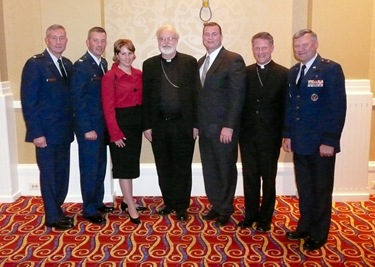
Then, a 150-member Catholic choir consisting of midshipmen from the United States Naval Academy in Annapolis, sang for us. It was very moving.
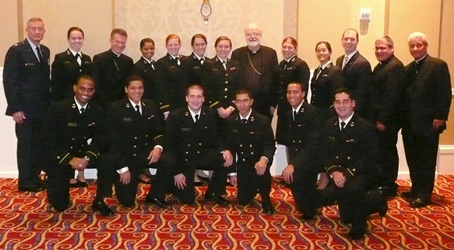
With the midshipmen
– – –
I also want to mention that on Monday evening we were treated to a show about St. John Vianney presented by St. Luke’s Productions. In fact, I had written a letter to the bishops inviting them to it.
It was a beautiful presentation about the life of the Curé of Ars performed by Leonardo Defilipis who also starred in the 2004 movie Therese, which some of you may be familiar with.
Here’s a video from the production’s web site http://www.vianneydrama.com which can give a sense of the play.
Until next week,
– Cardinal Seán



